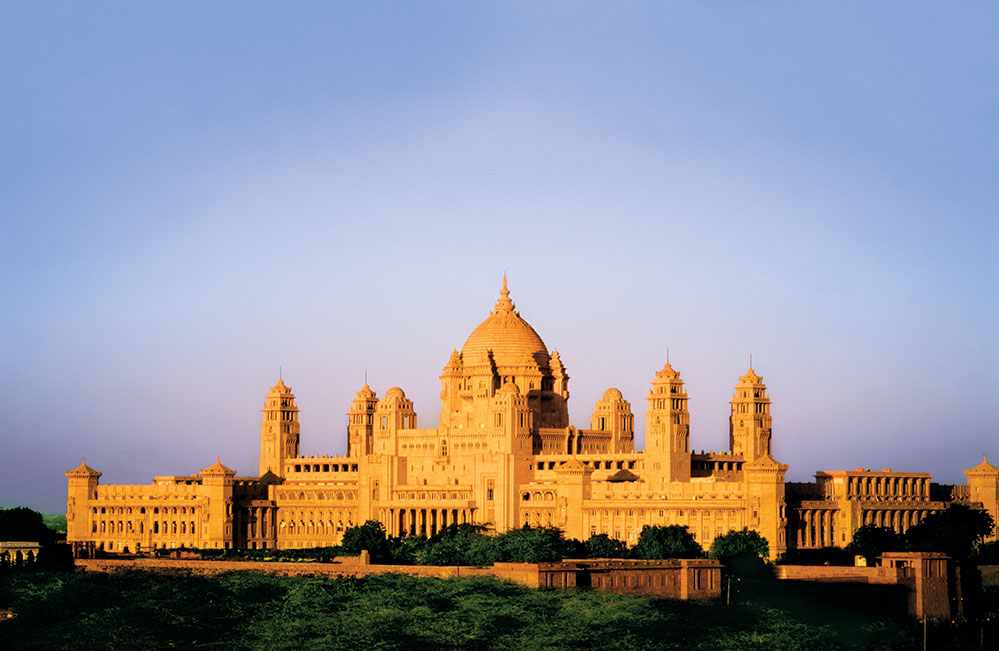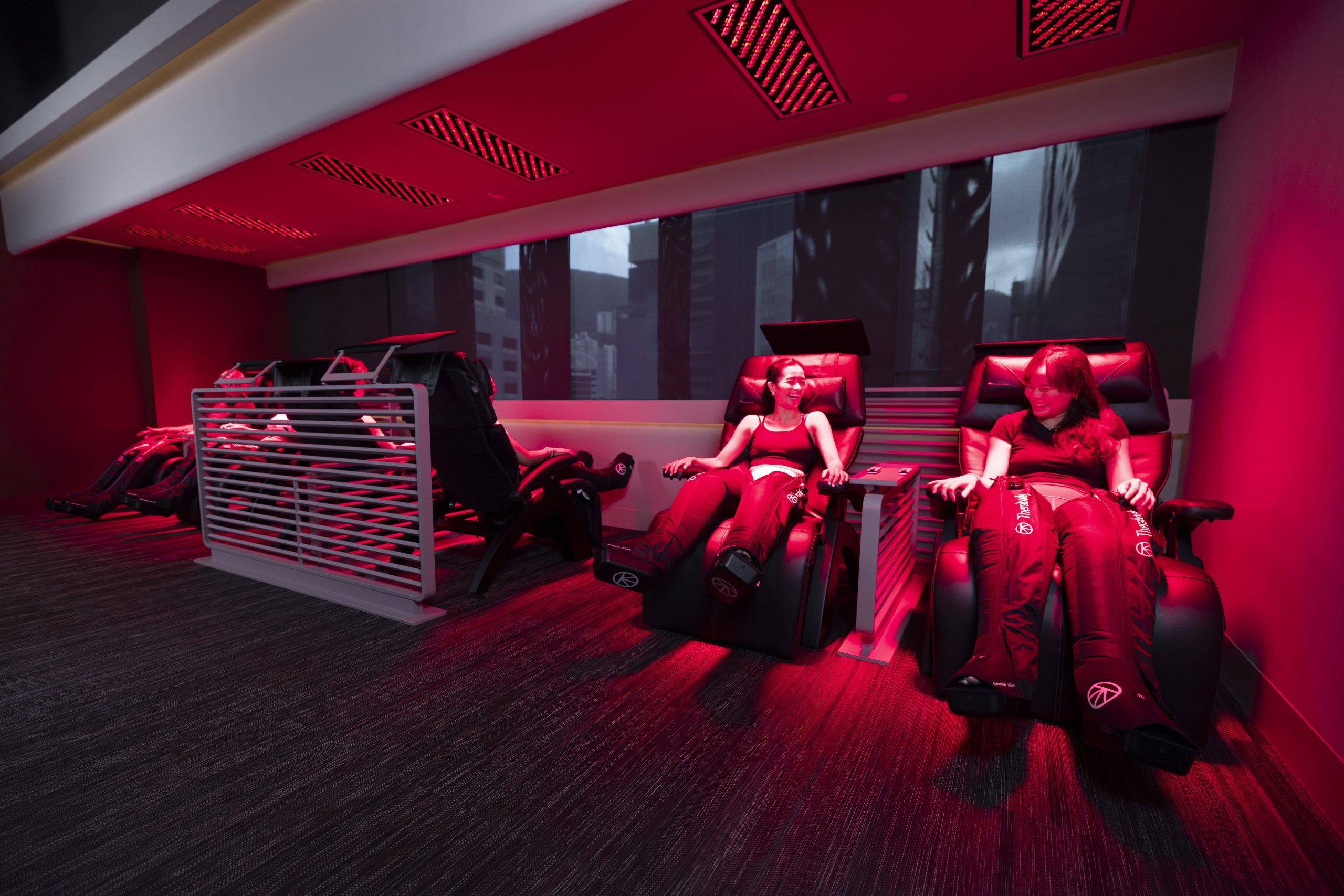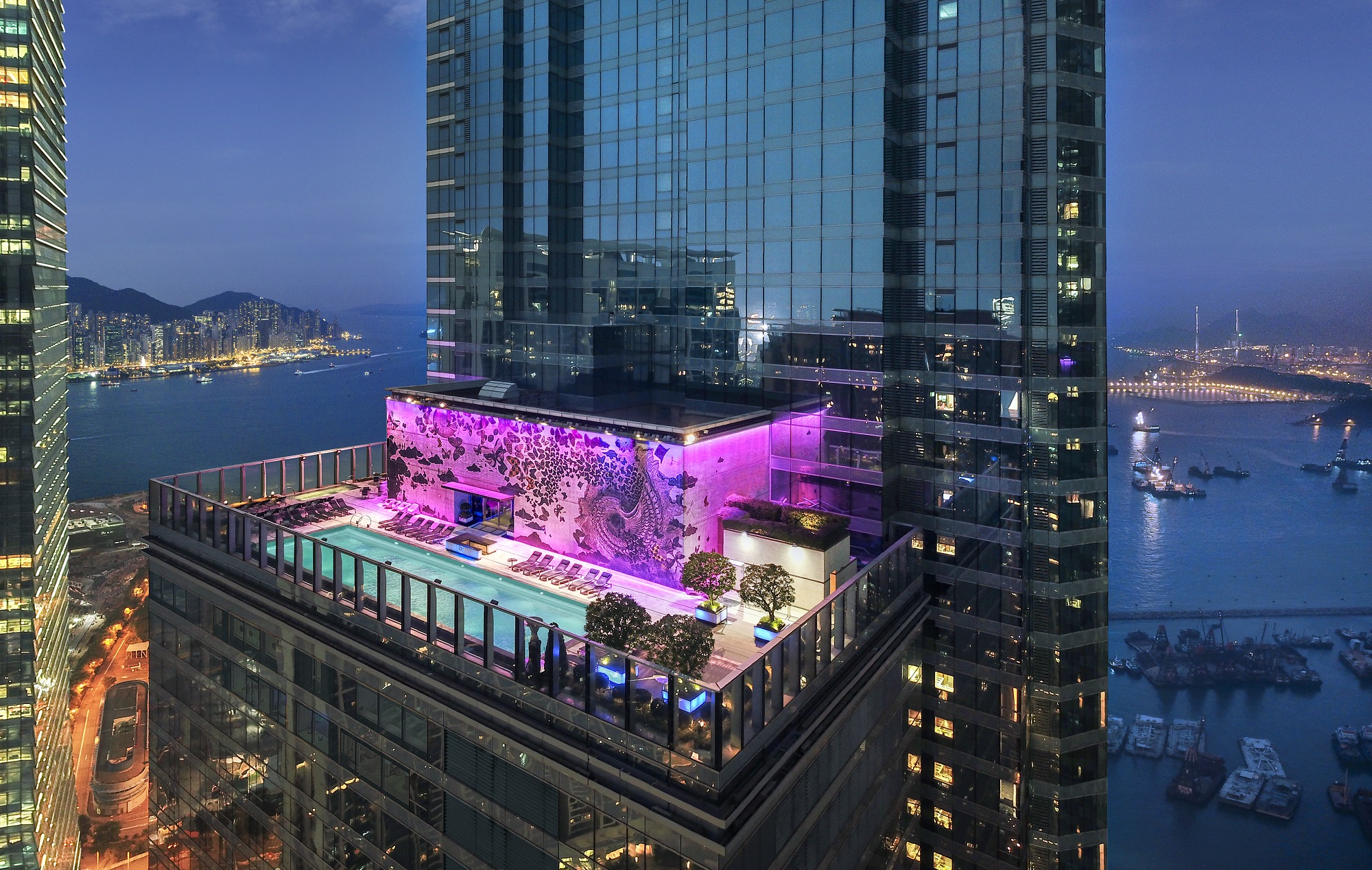
In today’s India you can stay in a minimalist power pad or a swish loft-style suite that wouldn’t be out of place in London or New York. But what’s the point of doing that? India is a magical, overwhelming merry-go-round of colour and the exotic, of wildlife and spirituality – so why not jump on and go for a spin? I ponder this as I perch on a swing in the gardens of the Umaid Bhawan Palace in the city of Jodhpur, one of the main draws of the northern Indian state of Rajasthan. Part hotel, part royal residence, Umaid Bhawan is the home of the Maharaja Gaj Singh II of Jodhpur. It is one of the biggest private residences in the world, containing 374 rooms, set in 10.5 hectares of glorious grounds. And it is one of India’s most exclusive hotels, where guests can live the life of Indian royalty, even if just for a couple of nights.
As I swing on the swing, a peacock struts past and displays its tail against the backdrop of romantic cupolas rising majestically from the grand ranks of the palace’s columns. A passing gardener informs me that the lawns beneath my feet are of Kenyan grass imported in the 1940s and since expertly tended. The palace is that kind of place: in creating it, nothing was too much trouble, and learning about its subtle eccentricities such as its Kenyan turf make it all the more enjoyable.
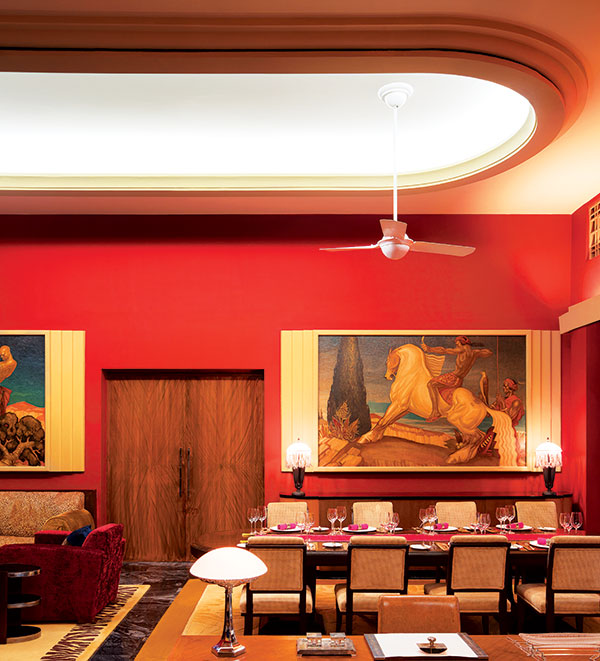
Guests can take pictures of the maharaja’s collection of vintage cars and his private museum, with its enormous display of weaponry. One can make side-trips to spend an hour or two at the palace, admiring the glory of the gardens, the grandeur of the dining rooms and the splendour of the bedrooms. British architect Henry Vaughan Lanchester designed the Umaid Bhawan Palace, blending Eastern and Western influences. It took a decade and a half to build, completed in 1943.
For romance and over-the-top luxury, Umaid Bhawan is hard to beat. Few other hotels in the world dispatch a velvet-lined carriage to glide down the driveway at a gentle trot and deploy turbaned attendants to strew rose petals in your path as drummers welcome you in. It is a royal arrival that is at once quintessentially Indian yet unique. The establishment plays up all that is extraordinary and magical about India, so that its guests may revel in it.
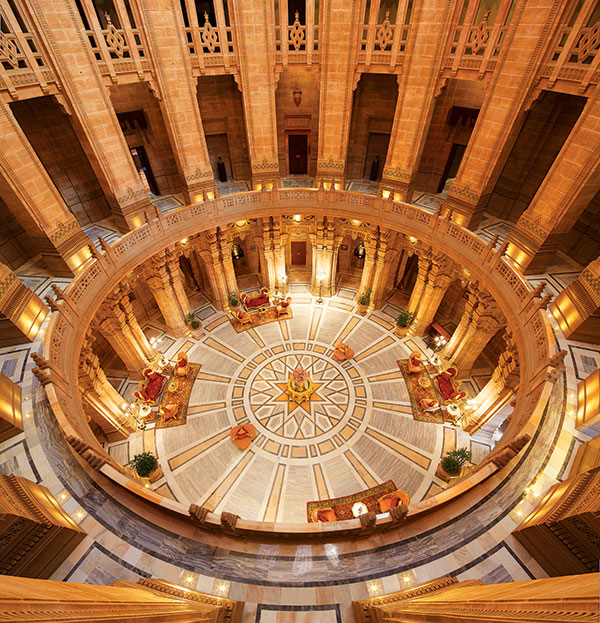
For the complete Indian royal experience, book the Maharani Suite. It comprises 4,850 square feet. The style is classic art deco and the suite still has the original fixtures. The decor is in soft shades of pink with black and chrome accents.
The suite contains a huge figure of the Hindu goddess Kali, representing empowerment, engraved on a panel of black glass. It is the work of the French artist Jean-Pierre Norblin de La Gourdaine.
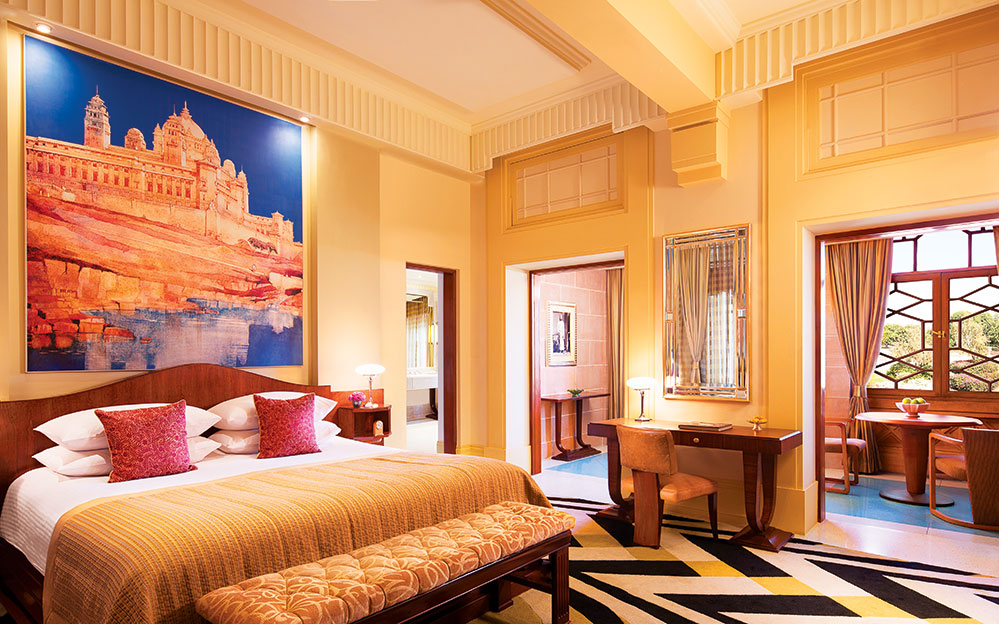
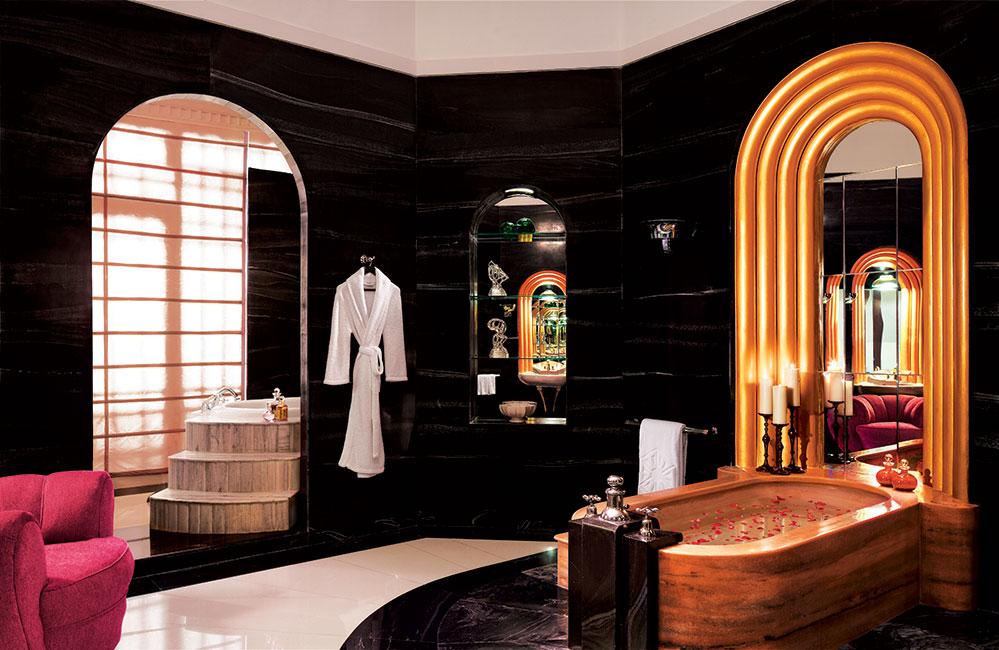
In the more masculine Maharaja Suite are other examples of the artist’s work: frescoes of leopards, tigers and horses. The Maharani Suite is ideal for entertaining, having a huge drawing room, a dining room and a private terrace with sweeping views of the palace gardens and the Mehrangarh Fort beyond. The bedchamber has an enormous feather bed. The bathroom has an eye-catching bath made from a single piece of Italian pink marble. This suite which is fit for a queen is favoured by honeymooners.
Once the heat of the day has abated, I explore the narrow lanes and bustling streets of Jodhpur. The shops and stalls that visitors flock to are crammed with ornaments, tribal artefacts, tableware and fashion accessories from all over Rajasthan. I begin at Lalji, a stone’s throw from the palace gates. I wander through rooms full of furniture and household wares of various vintages. I settle on an old- fashioned tea-making set. The shop will arrange for delivery abroad. Jodhpur gave its name to jodhpurs, a variant of riding breeches. Jodhpur has been the polo capital of India since the British introduced the game in the 19th century. You can buy a pair of jodhpurs from India Tailors in High Court Road, which supplies the royalty of Jodhpur.
Shopping done, I set off for Mehrangarh Fort, the highlight of historical Jodhpur. The fort, one of India’s biggest, dominates the Jodhpur cityscape, rising 125 metres above the summit of a prominent hill. It was built in 1459 and is still kept up, mainly by the city’s royalty. The author Rudyard Kipling described the fort as “the work of angels, fairies and giants…built by Titans and coloured by the morning sun”.

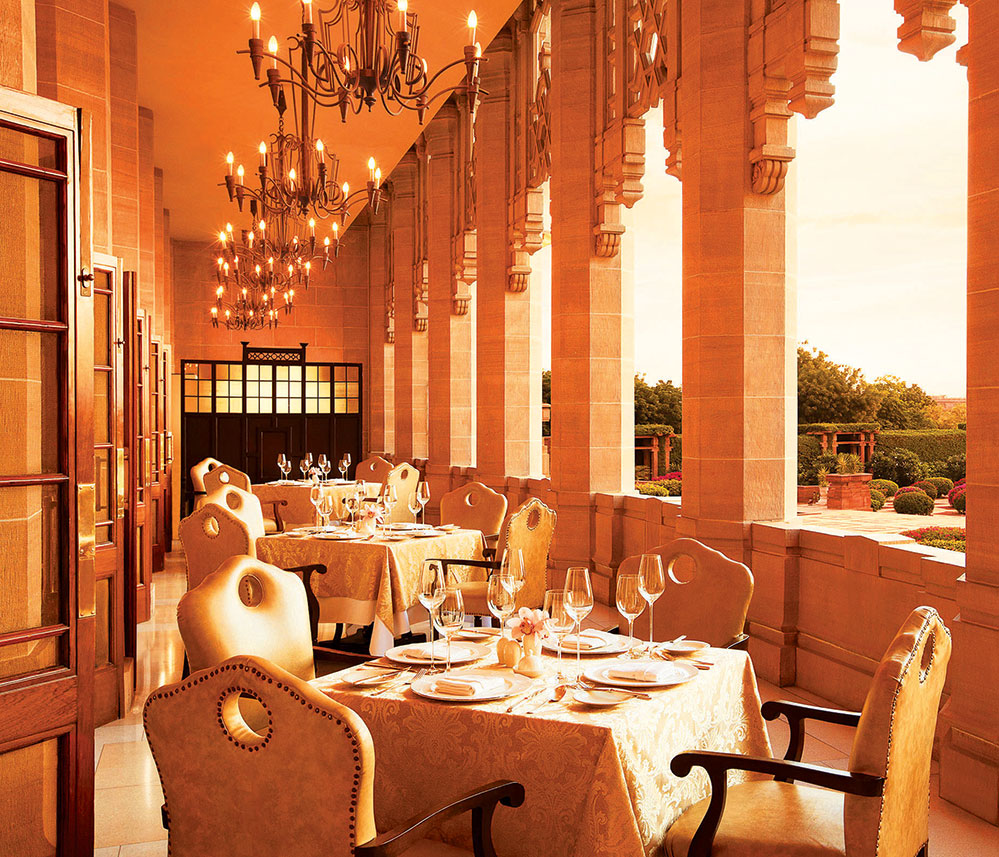
Behind the walls of the fort lie charming courtyards and gardens, and a superb museum housing a notable collection of miniatures and full-scale portraits of royalty. The view from the top of the walls is sweeping. Tourists crane forward to photograph the city’s famous blue houses. Nobody can say for certain why Jodhpur’s houses are painted a light indigo. Some say the reason is religious, others that the colour simply keeps the heat at bay.
Back at Umaid Bhawan, I spend a blissful and cooling hour in the grand Jiva Spa. Refreshed, I run the gauntlet of the palace’s menagerie of stuffed wildlife – leopards baring killer fangs, startled-looking deer and sad-eyed antelopes – then pass under the central dome, said to have been modelled on that of the Taj Mahal. Gentle notes of Indian classical music lead me out onto a colonnaded veranda overlooking the perfect lawns. There, at the Pillars restaurant, I dine al fresco as the sun sinks lower in the sky. The rich thali I order – a platter of various dishes – is typical of northern Indian fare, which is meatier than the coconut- laden food of the south. I cap the meal with a cooling basil sorbet, just as the sun sets and the sky turns a sugary pink.

The acres of green that stretch away from me take on a softer hue as the light fades. In a little marble pavilion in the middle of the lawn, Indians in flowing saris and golden sandals sashay and pose for photographs. Turbaned musicians sit cross-legged on the grass, their nimble fingers giving voice to tabla drums and the sitar, filling the air with rhythm and melody. I reluctantly withdraw from this gentle atmosphere of elegance and refinement, retiring to my suite for a rose-petal bath, prepared by my butler, before abandoning myself to the embrace of my feathery bed.
I am luxuriating in another world, another era – and it’s the pared-back, clean-lines surroundings of New York, London and modern India that seem unreal.
